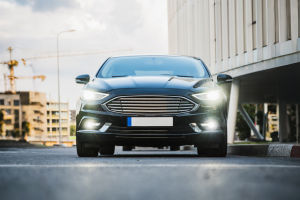You don't need to dread winter driving, but you do need to respect it. Whether you're navigating icy city streets in Minnesota or winding mountain roads in Norway, the cold season brings a whole new set of driving challenges. And surprisingly, many drivers are still unprepared.
This article doesn't just repeat the basics ('slow down' or 'check your brakes'). Instead, let's go deeper—into traction, tire tech, maintenance details, and the small habits that keep you safe and your car running strong.
Winter Tires vs. All-Season: There's a Clear Winner
Still thinking that all-season tires are 'good enough' for snow? That's a costly misconception. According to research by the Tire and Rubber Association of Canada, winter tires can improve stopping distances by 25–30% on ice and snow compared to all-seasons.
Winter tires use a special rubber compound that stays flexible in freezing temperatures. But what really makes the difference is the tread pattern—engineered to grip snow, bite into ice, and channel slush away.
Here's what you need to know:
• Install winter tires on all four wheels, not just two.
• Ideal switch-over temperature: below 45°F (7°C).
• Studded tires work well for rural or mountainous routes with packed snow.
For urban commuters in places like Boston, Toronto, or Stockholm, quality studless winter tires are typically the best balance of safety and comfort.
Snow Chains: When and Where They're Useful
Snow chains aren't just for alpine road trips—they're a vital emergency tool if you're driving through regions with sudden snowstorms or steep gradients. Many countries and U.S. states (like California and Colorado) mandate chains in certain conditions.
Use them when:
1. You see 'chains required' signs or road warnings.
2. You're heading into remote areas or high-elevation passes.
3. You're driving a 2WD vehicle without winter tires on deep snow.
Quick tip: Always practice putting your chains on before you need them. Trying to figure it out with frozen fingers and blowing snow isn't fun.
Cold Weather Maintenance Essentials
Vehicle neglect in winter often shows up at the worst moment—like a dead battery in a remote parking lot or frozen washer fluid on the highway.
Here's what to check and prep before temperatures drop:
1. Battery Health: Cold weakens battery performance. If yours is over three years old, have it tested. Consider a battery blanket or trickle charger for very cold climates.
2. Washer Fluid & Wipers: Use winter-rated washer fluid (often good down to -20°F) and swap in silicone or beam-style wiper blades for better clearing.
3. Coolant and Antifreeze Mix: Make sure your coolant system is topped up and has the right freeze protection. A 50/50 antifreeze mix is typical.
4. Engine Oil Viscosity: Use oil that's rated for winter conditions. Many manufacturers recommend a thinner viscosity in cold climates (like switching from 10W-30 to 5W-30).
5. Tire Pressure: For every 10°F drop in temperature, tire pressure drops about 1 PSI. Check it weekly in winter.
Driving Techniques That Actually Work
Forget the 'pump your brakes' advice—that's outdated. Here's what works with modern vehicles:
1. Easy Does It: Accelerate slowly. Brake early. Sudden moves cause loss of traction.
2. Let ABS Do Its Job: When braking hard, don't fight the pedal. You'll feel vibrations—that's normal.
3. Use Lower Gears: In snow, starting in second gear helps reduce wheel spin.
4. Know Your Drivetrain: AWD helps start moving, not stop. Don't rely on it for braking.
Also, keep your gas tank at least half full. It reduces condensation in the tank and ensures you're not stuck with an empty tank during long delays.
Adapting to Local Conditions: Not All Snow Is Equal
Driving in northern Michigan is a different experience from driving in Iceland or Finland.
In the U.S. and Canada, black ice and freeze-thaw cycles are major hazards—especially on bridges, shaded highways, and rural roads.
In Scandinavia, studded tires or studded winter bike tires are common, and drivers often train in icy conditions from an early age.
In the UK and parts of Northern Europe, sudden snow is rarer but causes more chaos due to lower tire preparedness and fewer plows.
Adjust your gear accordingly. If you travel between regions, consider carrying:
• A small shovel.
• Tow strap.
• Traction mats.
• Extra gloves and a blanket.
• Flashlight and power bank.
Efficiency Matters Too
Winter doesn't just affect safety—it impacts fuel economy and EV range as well.
• For gas cars, allow only 30–60 seconds of idling before driving off gently. Excessive warm-up wastes fuel and adds wear.
• For EVs, precondition the battery while plugged in. Cold batteries reduce range by up to 40%. Heated seats use less energy than cabin heaters—use them smartly.
If winter driving has ever stressed you out, you're not alone. But smart preparation can turn anxiety into confidence. Think of it like ski gear: the right equipment and a little know-how make the whole experience safer and smoother.
Got a favorite tip or a close call you learned from? Share it with someone—it might just help them avoid a slippery mistake.


